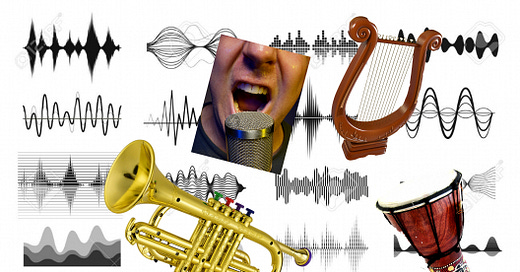NPR once had an investigative report based on a very lame question: “Why do we like art? We don't need it.” To me, the real question should be, “Why do we pretend we don’t need the arts when we have so much proof that it is essential to being human?”
King Midas literally monetized everything he touched. Our workaholic society seems to covet that power and often tries to get by without accounting for our nonmonetary needs (unless they too can be monetized). One of those is music.
Since ancient times, we have had a fundamental human need to make sure that music is created, performed, used, heard. The effort to guarantee that there is always a way for people to play and listen to music is basically a definition of what we call music business. It’s always been around in some form, and always will be, whether monetized or not.
Academic disciplines such as paleomusicology or paleoacoustics are fairly new fields of research but they reveal the depth of our musical roots. If you take a look at this page about archaeo-acoustics, for example, you’ll find many descriptions of the ancient use of music, including 30,000-year-old bone flutes; 20,000-year-old caves where rock art is concentrated the acoustics are best; Stone Age “lithophones,” painted stalactites and stalagmites that produce bell or gong songs and show signs of ancient percussion marks; Neolithic chambered tombs built to favor acoustics in the 110Hz range of the male baritone voice; and Neolithic stone circles that reflect sound toward the center of the circle. We learn of Mayan structures with acoustic qualities that have been studied by modern acousticians to improve outdoors amphitheaters, because some of these ancient structures somehow amplify sound as it moves 500 feet from one end of a court to the other. There are ancient myths about the building of cities or large structures using music to levitate stones, which seems pretty silly except that scientists in 2014 did levitate objects using sound, and in 1939, a Swedish scientist witnessed, and even filmed, Tibetan monks levitating large stones using a set of 13 drums and 6 trumpets.
In written historical memory, we frequently come across the use of music for commemoration, ritual, entertainment and war. Some musical patterns are known to induce trance or calm, and others to stimulate and excite. In some places, laws were put in place to require extra penalties to be imposed if someone injured a musician (depending who he belonged to).
Music and the other arts are clearly no less essential to us today. A fairly recent U.S. Census indicated that there are over 2 million full-time artists in America, generally earning a better-than-average income. That’s more people than serve in the U.S. military, and about as many as there are doctors and lawyers combined. And this is not counting the millions more who work part-time in the arts.
These artists work in music, writing, visual or performing arts, architecture, design, and produce artistic products that we totally depend upon every day. How long can you go without hearing any music? How many movies, TV programs, internet episodes or video games have you come across that have no music? Artists and writers make possible every package, format or presentation that we see or use today. By contrast, many of us can go a long time without seeing a doctor, and sometimes even decades without needing a lawyer!
When we consider these facts, it seems that the question that was posed by NPR, in that program I mentioned, says more about our society than about the arts. What kind of society imagines that humans don’t need music and the arts?




Remarkable piece, Ed. So many thought-provoking examples. I will be sharing this with a friend who teaches music appreciation. Thank you!